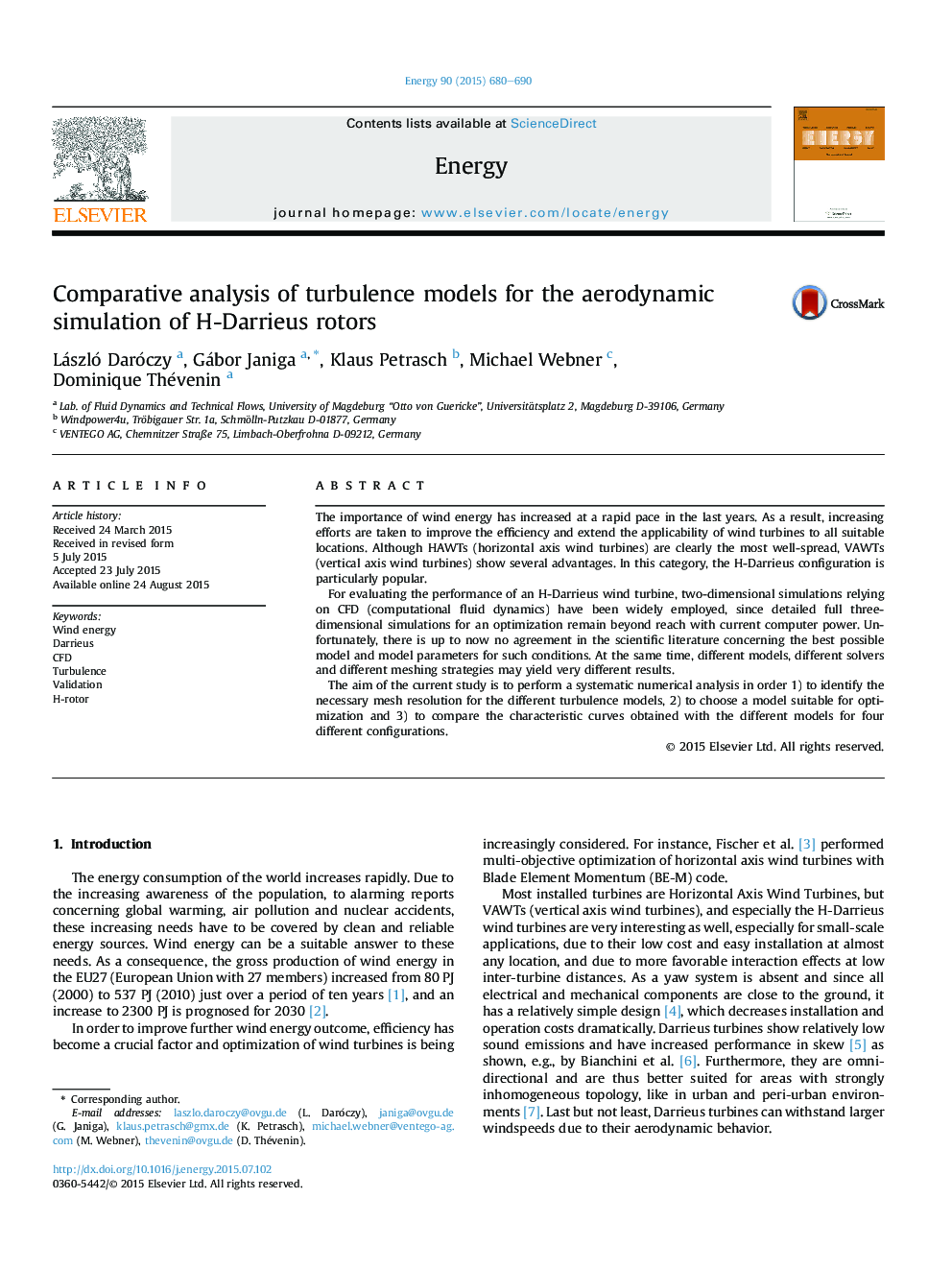| Article ID | Journal | Published Year | Pages | File Type |
|---|---|---|---|---|
| 1731770 | Energy | 2015 | 11 Pages |
•Two-dimensional CFD simulations were analyzed for an H-Darrieus rotor.•Spatial and temporal resolution was analyzed with different turbulence models.•Four experimental measurements were compared with different turbulence models.•k-epsilon Realizable and k-omega SST model were chosen as best candidates in 2D.
The importance of wind energy has increased at a rapid pace in the last years. As a result, increasing efforts are taken to improve the efficiency and extend the applicability of wind turbines to all suitable locations. Although HAWTs (horizontal axis wind turbines) are clearly the most well-spread, VAWTs (vertical axis wind turbines) show several advantages. In this category, the H-Darrieus configuration is particularly popular.For evaluating the performance of an H-Darrieus wind turbine, two-dimensional simulations relying on CFD (computational fluid dynamics) have been widely employed, since detailed full three-dimensional simulations for an optimization remain beyond reach with current computer power. Unfortunately, there is up to now no agreement in the scientific literature concerning the best possible model and model parameters for such conditions. At the same time, different models, different solvers and different meshing strategies may yield very different results.The aim of the current study is to perform a systematic numerical analysis in order 1) to identify the necessary mesh resolution for the different turbulence models, 2) to choose a model suitable for optimization and 3) to compare the characteristic curves obtained with the different models for four different configurations.
